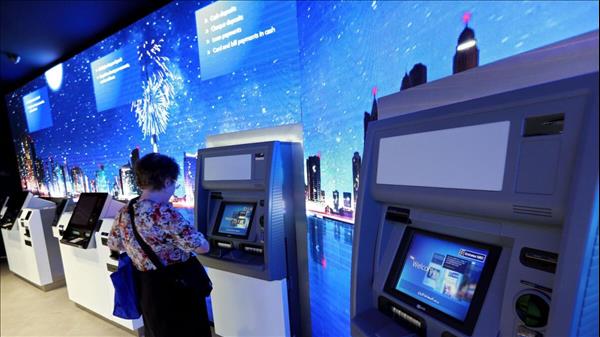
FAB, ENBD Rank Among Top Five Mideast Lenders As Assets Of 22 UAE Banks Hit Dh3.023T
First Abu Dhabi Bank and Emirates NBD, the two largest banks of the UAE, are ranked among the top five lenders in the Middle East, according to Forbes' list of Top 30 Banks 2022 in the region.
As of June 28, 2022, the 30 banks in the Middle East had a total market value of $586.6 billion and assets worth $2.5 trillion. Gulf banks dominate this year's ranking, with 25 out of the 30 based in the GCC. Saudi Arabia and the UAE are the most represented countries on the list, with 10 and seven banks, respectively. Qatar follows with four banks, while Morocco has three. Kuwait follows with two banks, and Egypt, Bahrain, Jordan, and Oman with one each.
According to the latest statistics released by the UAE Central Bank (CBUAE), total assets of the 22 national banks in the UAE rose to Dh3.023 trillion in the first five months of 2022, up four per cent (Dh117.3 billion). Assets of national banks accounted for 87.8 per cent of gross banking sector's assets of Dh3.442 trillion by end of last May, against 12.2 per cent for foreign banks. Assets of the 37 foreign banks in the country rose 2.22 per cent (Dh9.1 billion) to Dh419.4 billion by end of May from Dh410.3 billion in May 2021. In the first five months of the year, foreign banks' assets grew by Dh3.9 billion or 0.94 per cent.
In the first half of 2022, all major UAE banks recorded strong earnings on the back of improving business confidence and conditions in spite of geopolitical challenges, global recession fears, inflation concerns and economic slowdown of major economies.
While First Abu Dhabi Bank (FAB), the largest UAE bank by total assets, reported a 50 per cent jump in first-half net profit to Dh8 billion despite heightened global market volatility, Emirates NBD, the second largest lender in the Emirates, reported its highest first-half profit since lender, Abu Dhabi Commercial Bank posted a 21 per cent increase in first-half net profit to Dh3.059 billion.
Following a strong first -half, large banks in the UAE anticipate further improvement in their net interest margins over the course of 2022. FAB saw its NIM improve in the first quarter to 1.34 per cent from the year-ago 1.21 per cent, while Emirates NBD Bank's NIM grew to 2.58 per cent from 2.46 per cent on the back of an improved loan and deposit mix, according to S&P Global Market Intelligence data. NIM is a profitability measure that compares interest generated from loans with that paid out on deposits.
In the Forbes list, Qatar's QNB Group tops with $300.3 billion in total assets for the second consecutive year. The UAE's FAB, Saudi's Al Rajhi Bank, and Saudi National Bank follow in a three-way tie for second place. Emirates NBD rounds up the top five. Together, these five amassed $16.8 billion in 2021 profits, constituting 49 per cent of the aggregate profits of the 30 banks on the list.
Fitch Ratings expects higher oil prices and rising interest rates to lead to strengthening profitability for Saudi and UAE banks in 2022–2023. Fitch calculates that a 200bp increase in interest rates would boost Fitch-rated Saudi banks' operating profit by 14 per cent, and their operating profit/risk-weighted assets ratio by 50bp, on average, based on the banks' 2021 interest-rate sensitivities. For Fitch-rated UAE banks, the respective figures are 11 per cent and 40bp.
During the last monetary tightening cycle in 2015–2018, the average net interest margin (NIM) for Fitch-rated UAE banks contracted by 50bp, due to tight liquidity conditions. However, liquidity conditions are considerably more favourable this time, underpinned by the higher oil prices, and we therefore expect UAE banks' NIMs to widen in 2022–2023.
“We expect Saudi banks' funding costs will ease due to SAR50 billion of liquidity injections from the Central Bank of Saudi Arabia in June 2022, with more likely to follow to support strong loan growth. UAE liquidity conditions are more supportive, helped by modest loan growth. The contrast in liquidity conditions is illustrated by the sector loan-to-deposit ratios, with the Saudi ratio at its highest level for at least 15 years and the UAE ratio at its lowest level for more than a decade,” the rating agency said.
—

Legal Disclaimer:
MENAFN provides the
information “as is” without warranty of any kind. We do not accept
any responsibility or liability for the accuracy, content, images,
videos, licenses, completeness, legality, or reliability of the information
contained in this article. If you have any complaints or copyright
issues related to this article, kindly contact the provider above.
Most popular stories
Market Research

- Casper Network Advances Regulated Tokenization With ERC-3643 Standard
- Forex Expo Dubai Wins Guinness World Recordstm With 20,021 Visitors
- Superiorstar Prosperity Group Russell Hawthorne Highlights New Machine Learning Risk Framework
- Freedom Holding Corp. (FRHC) Shares Included In The Motley Fool's TMF Moneyball Portfolio
- Versus Trade Launches Master IB Program: Multi-Tier Commission Structure
- Ozzy Tyres Grows Their Monsta Terrain Gripper Tyres Performing In Australian Summers




















Comments
No comment